Babies are particularly prone to rashes because of their sensitive skin. Diaper rash is one of the most common issues new babies tend to get.
Diaper rash can come in a mild wave of discomfort, or reach the severity of actually being painful for babies if it isn’t remedied soon enough.
If you’ve had a baby who went through the process of having a diaper rash then you know how fast-acting it can be in evolving from mild to severe.
One day your baby is happy sitting playfully in his diaper, then the next thing you know he’s crying from the constant pain of his diaper rash just from you holding him to pat him on the back.
It’s not fun to see your baby crying in pain from a rash on their skin, and a good diaper cream is one way that you can resolve it faster than the other route of letting it run its course.
Many parents reach for the diaper cream, not knowing how to properly use it though. Some parents rub it on their child’s bottom not even thinking twice about whether they are applying it the way it should be properly.
If You Apply Diaper Cream Properly, the Diaper Rash Will Resolve Sooner
Applying diaper cream in the right manner is important if you want to help your baby’s rash resolve far sooner than it would if you hadn’t applied the cream the proper way. This is something most parents don’t even consider.
I mean, there are actual steps to apply diaper rash cream on your baby’s bottom? Who knew!
[amalinkspro type=”showcase” asin=”B0876VR68L” apilink=”https://www.amazon.com/dp/B0876VR68L?tag=mominformedcom-20&linkCode=osi&th=1&psc=1″ new-window=”true” addtocart=”false” nofollow=”true” sc-id=”4″ imgs=”LargeImage” link-imgs=”false” specs=”Dermatologist-tested preventative diaper rash Cream is cloth diaper friendly~~~Creates a protective barrier on babys skin~~~Dr. Browns Skin soothing Solution formula is a hydrating plant-based infusion only found in Dr. Browns Natural Baby skin care line~~~Anti-inflammatory Witch Hazel works together with other natural ingredients calm, refresh, and moisturize sensitive diaper area” btn-color=”#ff9900″ btn-text=”Buy on Amazon” alignment=”aligncenter” hide-prime=”0″ hide-image=”0″ hide-price=”0″ hide-button=”0″ width=”750″]Dr. Brown’s Natural Baby Diaper Cream[/amalinkspro]
If you use diaper cream in the right manner, your baby’s body can do the work it needs to and will be given the best opportunity to resolve the rash as quickly as it possibly can.
It’s okay that you might not know the proper steps of how to apply diaper rash cream, that’s what I’m here to teach you – it can be broken down into 7 basic steps.
Most parents find that breaking down applying diaper rash cream into steps makes it easier to remember everything they need to do before closing up a diaper.
Learning these steps will help you apply diaper cream in the best possible way – which in turn helps you with – saving funds and maintaining the healthiest skin on your baby.
If you use diaper cream randomly or inconsistently, the diaper rash your baby is suffering from might still have the upper hand, and continue thriving despite your efforts to eliminate it.
What is Diaper cream and How Does it Help Diaper Rash?
Diaper cream does a number of things for your baby when suffering from a diaper rash, from soothing their inflamed skin while curing the rash to preventing it before the pesky rash happens in the first place.
Diaper cream prevents diaper rash from happening if you use it before the onset of a rash
If you use diaper cream before an outbreak occurs on your little one’s bottom, you can prevent diaper rash from happening in the first place.
The reason that diaper cream can prevent a diaper rash all together is due to the protective barrier it naturally creates between the skin on your baby’s bottom and the moisture that forms in the diaper environment.
There are a few main irritants we know of that can cause diaper rash.
The most common irritants are continuously present in your baby’s diaper region during your baby’s entire diaper phase, these irritants include acids from the food your baby has consumed, chemicals from the diaper itself, urination, and feces.
All of these irritants have the potential to cause a rash on your baby’s bottom that could turn into mild to severe diaper rashes.
It’s important to take the proper measures and apply diaper cream to your baby’s bottom in the right order to protect the delicate skin of your baby against these common irritants continuously.
View in gallery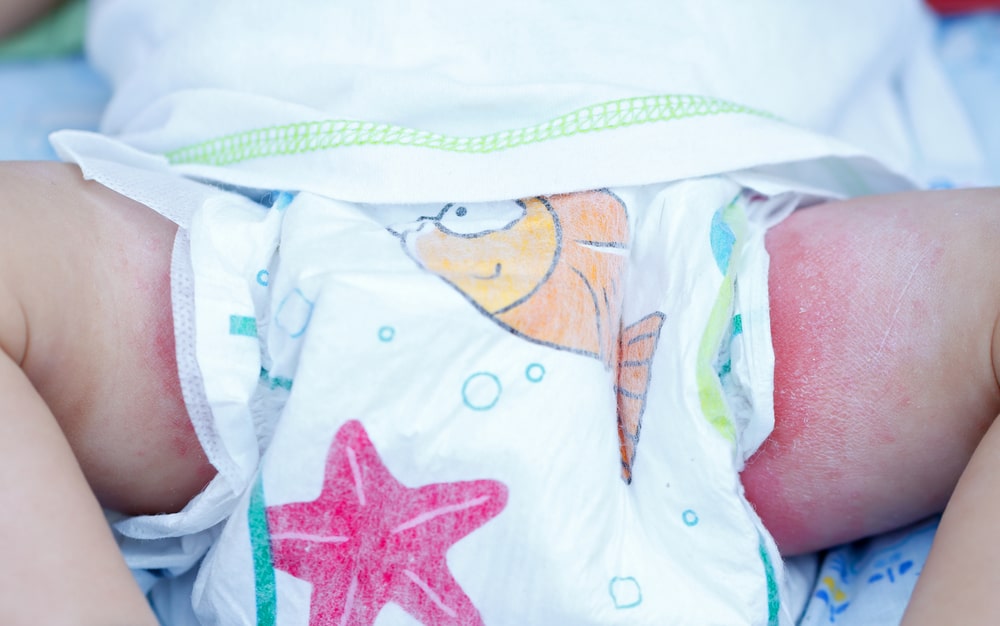
Diaper cream has the potential to treat diaper rash even after the rash is well established
When a diaper rash is already on your baby’s bottom, then a diaper cream is helpful to prevent the rash from worsening.
Diaper cream provides a protective barrier against the additional irritants being introduced while the rash itself takes the time necessary to fully heal.
If you use a diaper cream that is medicated for a yeast diaper rash, it will kill the yeast so the rash can fully dissipate.
A yeast diaper rash needs a special type of cream that has specific medicine added in it that will combat any yeast present in the rash, this is because yeast doesn’t typically go away on its own.
You can choose a suitable cream for the type of rash your baby is exhibiting signs of – whether it’s yeast or a common diaper rash.
Be sure to check for any signs of a yeast diaper rash compared to a regular diaper rash – treating your baby’s diaper rash properly is the key to resolving it.
What are the Different Kinds of Diaper Rash Creams Available?
There are three main types of diaper cream available on the market, creams, pastes, and ointments. Each serves a slightly different purpose and sometimes you will want to buy a few of them to cover all your baby’s needs.
Depending on what the symptoms of your baby’s diaper rash are, you will want to buy a specific ointment or cream according to the most obvious symptoms. Let’s discuss the various types of diaper rash creams and why you might need to use them.
Option number one: Creamy textured diaper cream
If your baby has skin that’s already irritated then a creamy diaper cream is best. Creams are water-based, which helps them be absorbed easily into the skin. There is usually a natural
version of these diaper creams as well, making them suitable for children with very sensitive skin.
Use this kind of cream if your baby already has a red rash, or if the skin on their bottom is dry and flaky. Water-based diaper rash cream will moisturize the skin and soothe the diaper rash when used regularly.
Option number two: Pasty diaper cream
After you have used diaper cream on a well-cleaned rash then it’s the right time to apply paste-like diaper cream. Paste creams are meant to act as a protective barrier for your baby’s skin.
[amalinkspro type=”showcase” asin=”B00569GU18″ apilink=”https://www.amazon.com/dp/B00569GU18?tag=mominformedcom-20&linkCode=osi&th=1&psc=1″ new-window=”true” addtocart=”false” nofollow=”true” sc-id=”4″ imgs=”LargeImage” link-imgs=”false” specs=”Boudreauxs Maximum Strength Butt Paste contains 40% zinc oxide, 2x more rash fighting power than Original Butt Paste. Zinc Oxide is FDA recognized ingredient proven to treat and help prevent diaper rash. Boudreauxs Maximum Strength Butt Paste starts healing on contact and ideal for moderate to severe diaper rash.~~~No harsh ingredients: Free of Dye, Paraben, Preservative, Phthalate, and Talc. Made with 6 simple ingredients designed to be effective in kicking diaper rash but gentle on babies skin~~~~~~” btn-color=”#ff9900″ btn-text=”Buy on Amazon” alignment=”aligncenter” hide-prime=”0″ hide-image=”0″ hide-price=”0″ hide-button=”0″ width=”750″]Boudreaux’s Butt Paste Diaper Rash Ointment[/amalinkspro]
You can use a paste diaper cream on your baby’s bottom before there is any rash, to begin with. The protective layer of a paste type cream will repel moisture off of your baby’s bottom and into the diaper more efficiently.
It’s always best to keep all moisture and irritants away from the skin as much as possible, this will keep diaper rashes and yeast rashes at bay.
Option number three: Ointment based diaper cream
Ointments will feel more oily than paste or creams do, which makes ointment based creams the best ones to use regularly.
They’re best for everyday use because they don’t absorb into the skin too quickly, but rather sit on top of the skin for a lot longer acting as a barrier while also soothing delicate skin.
When you apply ointment to your baby’s skin, there is a barrier created that will repel any moisture while also soothing your baby’s skin with the oils in the ointment.
If you invest in just one form of diaper cream, have it be an ointment based cream to get the most out of it.
How to Apply Diaper Rash Cream
Now that you know all about the various types of diaper rash cream, let’s go over how to apply diaper cream properly.
With proper methods of application, you will not only save money but ensure your baby’s skin stays the healthiest through all of their diaper years.
Since baby skin is constantly exposed to feces and urine, applying their diaper cream the correct way will help keep urinary tract infections, yeast diaper rashes, and other skin ailments at bay.
Step number one: remove your child’s old diaper and clean your baby’s skin
Change your baby’s diaper per usual, preparing the area to eventually wipe your diaper cream onto.
After you’re done wiping clean your baby’s bottom of all excrements from the dirty diaper, check all crevices in the thighs and buttocks for any remaining feces, wiping those skin folds thoroughly.
You don’t want to end a diaper cream slather session early due to wiping your hand in unexpected feces.
View in gallery
Step number two: Place a clean diaper underneath your baby’s bottom
Be sure to open up a clean diaper and place it underneath your baby before you apply any diaper cream at. Applying diaper cream can be a messy ordeal for everyone involved, so be prepared to get it all over the place.
You’ll need to place a clean diaper underneath your baby’s bottom, it’ll be a good place to catch any cream that accidentally drops off your fingers otherwise.
Step number three: Squeeze out a button size droplet of diaper rash cream on your palm to use
You want to get the most out of your diaper cream, I get it. Fortunately, you don’t need to use a huge amount of diaper rash cream to accomplish healing your little one’s rash.
So go ahead and use a small to medium button size amount with each diaper change if your baby’s diaper rash is not yet severe.
Most diaper creams will spread easily, so rest assured a small amount will get the job done. But, there are times when you might need to increase or decrease the amount of diaper cream you use based on the severity of your baby’s rash.
Increase the amount of diaper cream you’re using if your baby’s diaper rash seems to be severe or your baby has skin peeling off.
Decrease the amount of diaper rash cream you’re using if your baby’s rash seems to be getting significantly better, or no longer exists. If the diaper rash appears to be fully healed you can use a thin layer of diaper rash cream to treat the rash.
Step number four: Spread the diaper cream gently on your baby’s bottom once dry
Once you’re prepared to spread the diaper rash cream on your baby’s skin after their skin is thoroughly dry, choose the finger you will use to gently spread a thin layer of diaper cream over your baby’s bottom area.
If you’d like to use the finger that offers the gentlest touch, use your ring finger. Though your middle or index finger will be perfectly suitable as well if your ring finger feels too ‘light-handed’ so-to-speak.
Keep in mind that sometimes your baby will start to wiggle around once you start spreading the cream around.
If your baby does start to wiggle you can pull your baby’s feet together and lift their bum upward. In the same manner, you would during a regular diaper change.
Spreading the diaper rash cream on your baby should be fairly easy to do, most creams are designed to spread even and easily.
View in gallery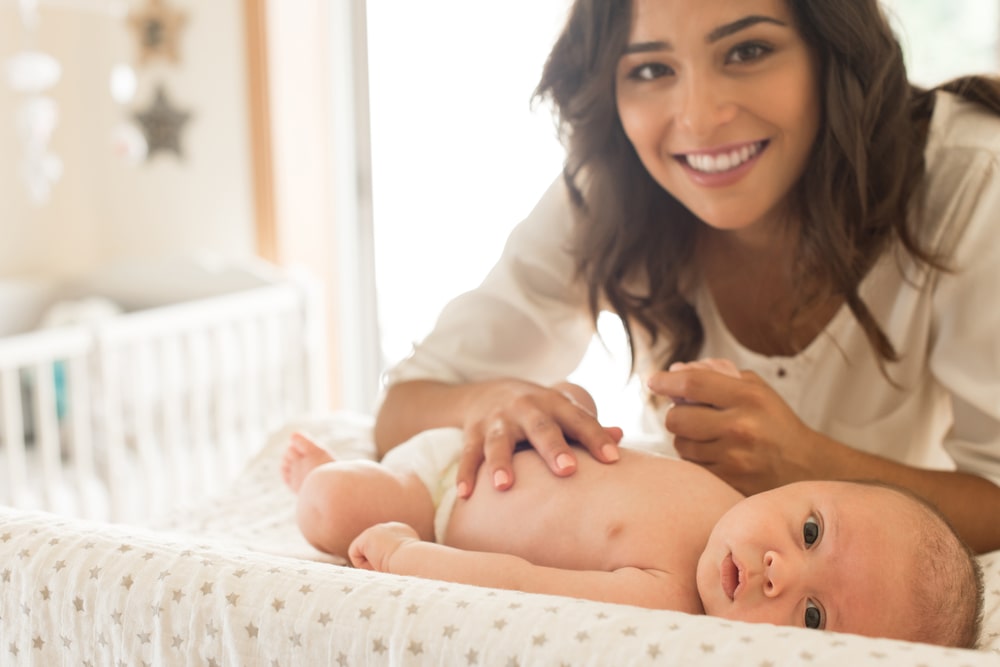
Remember to put a slightly thicker layer of cream on the areas that are more affected
Be sure to put a slightly thicker layer of cream on the most affected areas, this will give your baby’s skin more time to absorb the medicinal properties in the diaper cream over an extended period of time.
If you notice your baby seems to be hurting at all when you spread the cream on you can lightly tap the cream on your baby’s bottom – which is a bit more gentle. Tapping the cream onto your baby’s skin promotes blood flow to the region.
Step number five: Check that you have put cream on all the affected area’s as needed
Sometimes you don’t realize that you missed a few spots on your baby’s skin. Before you close up the diaper, check over these spots to make sure that you got the entire diaper region.
- The butt cheek crevice
- The labia and the perineum for a female baby
- The outside of the anus
- The entire scrotum and tip of the penis for a male baby
Step number six: Wipe any excess cream off of your fingers before closing up the diaper
The best way to close up your baby’s diaper is with clean fingers. If you have a bunch of leftover cream on your fingers, it could stain your baby’s clothes or get on their fingers from the natural movement as your baby grabs at her diaper.
When the clean diaper is still open, you can wipe the leftover cream from your fingers onto the diaper.
Some people don’t like the texture of diapers since they can catch on hangnails etc.. so if that’s the case for you, you can always reach aside and grab a clean baby wipe to wipe your fingers on.
Step number seven: Close up your baby’s diaper and fasten it securely
Once you have clean fingers, you can close your baby’s diaper up in order to fasten it securely. If you find that the diaper is fitted tightly on your baby, it might be time to upgrade to a bigger diaper size.
Securely velcro the diaper straps as needed to close it properly, and viola your baby is now wearing a clean diaper fully equipped with diaper rash cream to combat diaper rash and soothe irritated baby bum skin.
View in gallery
Lastly, wash your hands with soap once you’re all the way finished
When you’re all done changing your baby’s diaper it’s a good idea to wash your hands with soap and warm water. Since you’ll be continuing the day, likely handling your baby’s food and necessities – cleaning your hands from any excrement is necessary.
Keeping your hands clean after all diaper changes ensure you and your family doesn’t get sick from cross-contamination of fecal matter or urine. Even if your hands don’t feel dirty, you might still have bacteria on your hands.
The Most Common Questions Parents Ask about Diaper Rash Cream
Being a parent to a young baby in diapers can be confusing, there are so many products to choose from and many different forms of rashes that your baby might need to be treated for.
So how do parents distinguish a yeast rash from a common diaper rash, or when to take their baby to the professionals? I’ve gathered some of the most common questions that parents are asking to give you the answers all in one spot.
After all, you don’t know when you might run into some strange unusual symptom with your baby’s rash compared to the rash your baby generally has.
It’s always helpful to know that there are other parents who have gone through similar things with their baby too. And it’s your job as a parent to know when you need to take your baby to see the pediatrician instead of treating their rash at home.
Is it necessary to apply more diaper cream at every diaper change?
Well, this ends up being your choice as a parent, do what feels best to you. Many parents do not apply diaper cream at every diaper change because they see the rash dissipate after just a few times of using it.
One benefit to not applying diaper rash cream at every single diaper change is that you will save money by not having to purchase diaper rash cream as often.
On the other hand, many parents love to use diaper cream on their baby’s bottom during every diaper change.
Parents who choose to use diaper rash cream at every diaper change are recognizing the steps necessary to fully eliminate diaper rash all together requires a more preventative approach above all else.
View in gallery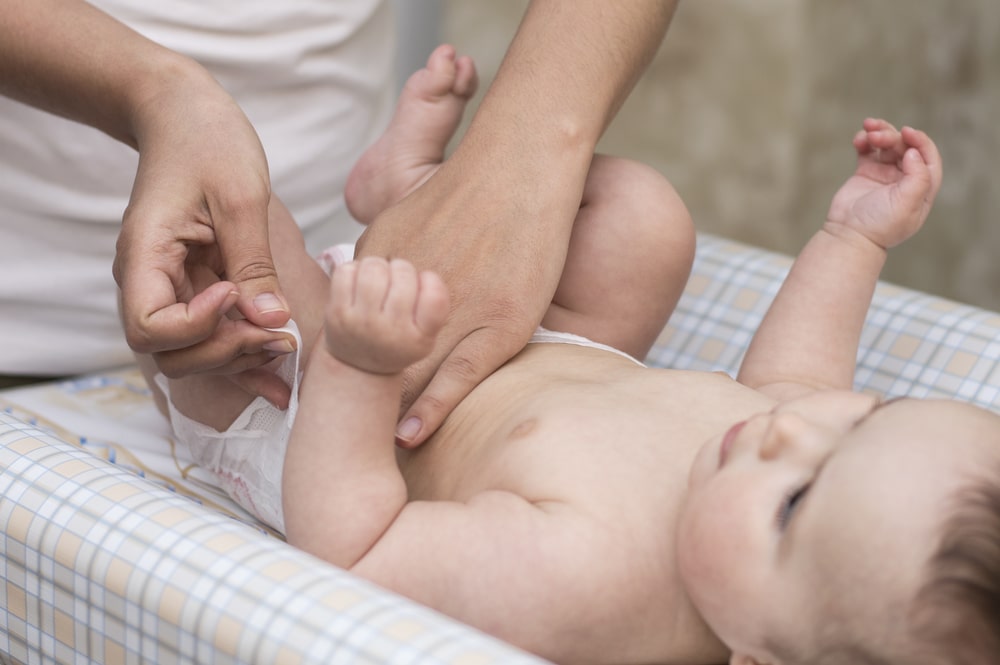
It makes sense that the best way to cure your little one’s diaper rash is to use the cream before signs of a rash appear.
Since diaper cream doesn’t have a rule of over-applying it, you can use diaper rash cream as often as you’d like to without harming your baby.
How to recognize the most common signs of a yeast diaper rash?
Caring for a yeasty diaper rash is a bit different than caring for a regular diaper rash. It requires that you use a medicinally based diaper cream to combat yeast and promote healthy skin bacterial growth.
Often times if there is a yeast rash present in your baby’s diaper region it will take much longer to eliminate. This is because the yeast grows so rapidly compared to the healthy skin bacteria while a rash is present.
Your baby’s skin will need your help to biome balanced again – keep your eye out for a yeast diaper rash – a yeast diaper rash will appear thickly swollen and red. There are telltale signs of a yeast diaper rash that include:
- A yeasty rash where moisture gathers in skin folds
- There will be white scales or lesions outside of the diaper region too
- You might detect satellite lesions in addition to the red rash
If you believe that your baby has a yeasty diaper rash choose a diaper cream that will prevent yeast to continue growing on the skin.
Yeast rashes can be painful and more irritating than a regular rash for your baby, so it’s important to treat the yeast rash as soon as you spot it.
What does it mean if diaper rash cream isn’t helping my baby’s rash to go away?
This falls in the realm of yeast diaper rashes – you feel that regular diaper creams aren’t helping your diaper rash at all then it’s probable the rash you’re dealing with is a yeast rash.
Topical yeast overgrowth happens more commonly than parents think, especially since baby skin is constantly being exposed to fecal matter and urine.
If the rash you’re dealing with looks as if it has a bumpy appearance to it and the diaper cream isn’t helping it, it can be classified as a yeast rash.
View in gallery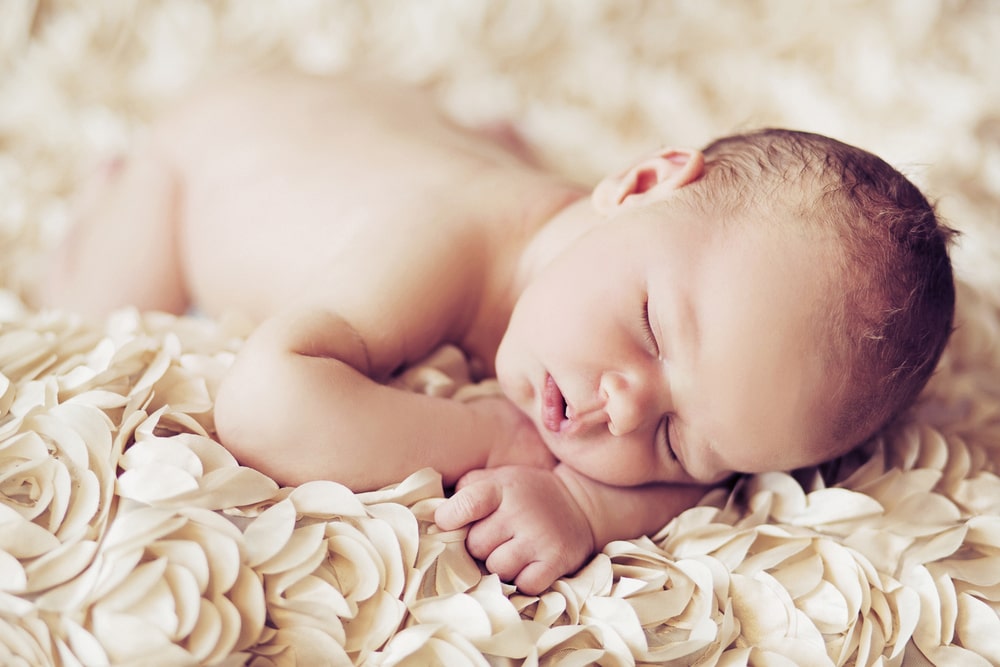
Allow your baby to have ‘air -time’ if it seems like nothing else is improving the rash
Be sure that you keep your baby’s skin clean and dry when it seems that creams aren’t helping the rash to go away in a timely manner.
Air-time allows your baby’s skin to dry out which will cure the rash by not allowing the proper environment for yeast to grow in.
Put a towel down for your baby to lay on in case they have an accident while laying out naked. The more air-time you give to your baby the faster the rash will improve.
If there is remaining cream from the last diaper change, do I need to completely wipe it off?
If there is remaining cream from the last diaper change on your baby’s skin you don’t have to clean off the cream from your baby’s skin 100%.
You do need to wipe clean the layer of feces and urine, then you can leave any remaining cream that is hard to wipe off as it is.
Sometimes it’s hard to wipe it completely clean because it’s already halfway absorbed into your baby’s skin, it’s okay to leave this layer of cream as long as there is no visible poop mixed in with it.
Is it possible to change my baby’s diaper too frequently?
We know that it’s never good to let your baby sit in a soiled diaper for too long, but what about changing your baby’s diaper too frequently? Some parents feel that constantly wiping their baby’s delicate skin is what’s irritating their little one’s skin.
The answer is no, you can’t change your baby’s diaper too frequently. If the diaper on your baby is already soiled with urine or fecal matter then it’s ready to be changed. It’s not good to let your baby sit in their dirty diaper at all.
If you’re unsure of how often to change your baby’s diaper, you can check it every 2-hours. Most babies will need to have a diaper change by the 2-hour mark at the latest.
View in gallery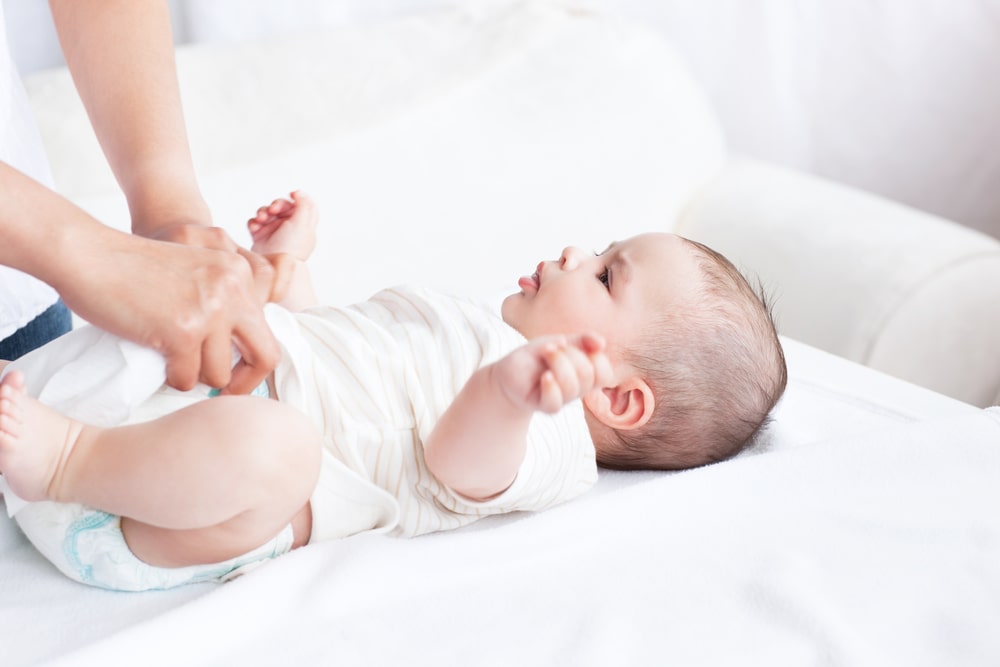
Or, you can buy the type of diapers that help repel moisture away from your baby’s skin on a more intense level, they do this by absorbing moisture into the diaper more efficiently.
Fortunately, the diapers that are built to absorb moisture better are equipped with a way of telling you that the diaper is spoiled – there is usually a yellow line along with the diaper that turns blue once it comes into contact with pee or poop.
Is it okay to apply diaper rash cream on my newborn?
You can use diaper rash cream on your newborn, but you should opt for a natural or organic version if possible. Newborns are highly sensitive to preservatives, chemicals, and parabens sometimes added into creams.
The best protocol for newborns who have diaper rash is to rinse their skin with warm water, and offer as much air-time as possible. Newborns usually react within a three day period to these measures to promote healing.
If your newborn seems to have a yeast diaper rash, try using a mild diaper rash cream before resorting to non-organic diaper rash creams.
Remember that your newborn is still becoming accustomed to any chemicals in their diapers as well, so wipes and certain creams can cause further irritation to their rash.
If it seems that diaper cream is causing your newborn’s diaper rash to become more inflamed, peels, or form pus sacs then you should discontinue using the cream immediately and let your newborn have air-time until it resolves.
In Conclusion
Applying diaper cream on your baby is one step forward to properly treating their diaper rash. Many parents aren’t aware that the one-step they’re missing to fully treat their baby’s diaper rash is in the application process.
If you want to get the most out of your diaper cream, and cure your baby’s rash in the shortest amount of time, applying diaper cream in the 7-step approach mentioned earlier will ensure that your baby doesn’t have a diaper rash longer than necessary.
There are many different kinds of diaper creams, and choosing the correct one can be confusing. Hopefully walking through the world of diaper creams was helpful to treat what your baby is going through.
The last thing you want to see as a parent is a rash on your little one’s bottom and feel the pain it causes – the sooner you can resolve your baby’s diaper rash the better.






